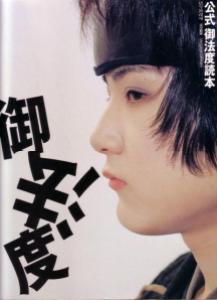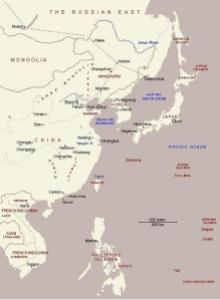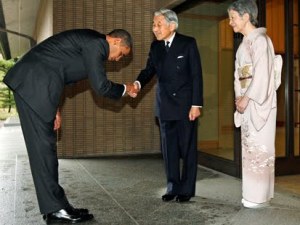危ない義理のできる男色
Oshima Nagisa’s 1999 film Gohatto is about desire and suspicion within the ranks of the Shinsengumi during the bakumatsu period. The film can be interpreted as both an examination of the destructive effects of desire within the brotherhood of the militia and as an allegorical criticism of the way modern Japanese society forces individuals to repress their desires for the sake of the group. While the second interpretation is entirely subjective, it is not unlikely given the fact that the director, Oshima Nagisa, commonly uses historical settings to criticize and examine modern society within his films. Furthermore, his failure to accurately reconstruct the sentiments of Tokugawa samurai during the mid-19th century within the film implies that Oshima Nagisa was more interested in using the subject matter to criticize modern society than in accurately reproducing the mentality of the time. It is clear that historical accuracy was not the primary concern of the director. Though Gohatto accurately portrays the environment and the official attitude of Tokugawa lawmakers towards shūdō (male-male relationships), its characters view the subject with an attitude that is far too modern.
A few days ago, I read the article “Finding Sparks Rethink of Russo-Japan War” in the Yomiuri (Link to original article HERE). According to some new documents discovered by University of Tokyo historian Wada Haruki, a key Russian politician attempted to propose an alliance with Japan in the days leading up to the Russo-Japanese War. The article reports that Aleksandr Bezobrazov, a man who has long been considered an advocate of the conflict, first communicated the draft “to Japan’s Foreign Ministry by telegraph on Jan. 1, 1904, by a Japanese diplomat in Russia. The diplomat reported to the ministry in detail about the proposal 12 days later…Despite the tip, Foreign Minister Komura Jutaro met with Prime Minister Katsura Taro, along with the ministers in charge of the army and navy, on Jan. 8, when they agreed to initiate hostilities.”[i] The article concludes that this new finding could lead to a revision of the widely-accepted interpretation that Japan was goaded by Russia into starting the conflict. This may also attract attention in Japan because NHK just started airing a three-year drama series based on a saga by novelist Shiba Ryotaro that depicts the Russo-Japanese War as one of self-defense by Japan.
This week is Christmas, so I’ve been teaching Christmas classes. This really just involves me having my students watch a segment from “A Sesame Street Christmas Carol” and baking them gingerbread cookies. (Hey, it’s the last class before winter vacation, if you think you’re going to get the kids to do any work you’re probably suffering from the side effects of a temporal lobotomy.) Most Japanese homes don’t have ovens, so being able to produce homemade cookies makes you a magician on par with Siegfried and Roy. Only without the tigers…and homosexual innuendo. But today was a pretty bizarre day…
First, I had three girl students give me a Christmas present and a homemade Christmas card where they wrote “You baked for us is cookies. Delicious. Please again. Thank you!” That was extremely sweet and touching.
Then, in class I taught the students the word ‘collection.’ For example, “I like Rilakkuma, so I collect Rilakkuma things. I have a Rilakkuma collection.” Then I asked the students if they collect anything. You can always count on boys to say something entertaining and two answers stuck out from the rest:
A) I collect girls. (Uh huh, sure you do.)
B) “I collect ‘good’ movies.” says the student.
“Really? What is the title of one?” I ask.
“Uh…it’s a secret…” says the boy.
“Do you have a hentai video collection?” I ask.
The class bursts into laughter.
Then, we watched two short videos about Hanukkah and Kwanzaa. In the videos, everyone is hugging. I explain that hugging is a part of American culture. On the way out of class, a boy student hugs me while his friends (and one of the English teachers) yell “SEKUHARA!” (Sekuhara is the cute Japanese way of saying sexual harassment). Then he ran away. Yeah, I told my students that hugging is ok in America, so I guess I had that one coming…
I also had a boy student say, “I love you” and run out of class. And people say Japanese kids don’t learn anything in school.
Later in the day, I had yet another boy student come up to me and say “Sensei, itsumo kawaii” and run away while his friend stared at me dumbstruck. Japanese high school boys have courage, but they really need to work on their follow through – running away isn’t going to win you a girlfriend.
After work, I had a police officer pull me over for exceeding the speed limit while passing a car (not out of the norm considering the way people drive where I live). But, he just said “Dame desu yo!” and made me promise not to do it again. Then he started talking about how he can’t speak English, but if he had a teacher like me when he was in high school he would have studied a lot harder. I gave him a cookie. Seriously, I gave him a cookie.
Then I went to the office New Year’s Party and gave out more cookies. And won a takoyaki grill in a quiz game because of my freakish knowledge of Japanese history.
Moral of the Story: Cookies is Japan are like volatile magic fairy dust…they both create problems and solve them. Either way, it’s bound to make the day more enterntaining.
My sannensei students sometimes write extremely adorable essays:
My treasure is this charm. This is the charm for entrance examination. When I was a junior high school student, I had a close friend. He was the most intelligent in the school. What he was intelligent was true, but he wasn’t earnest. He would often find fault with others, and he didn’t obey the school regulations. Anyway, he was not warm-hearted. But he was not always cold-hearted. He was kind to me occasionally. Informed of his leaving Oshima after he graduated, I felt bad a little. The graduation ceremony breaks up, he approached me, and gave me this charm. For I have talked with him about the university once. I never dreamed. I was glad to have given me all the more because he was cold-hearted. So this charm is my treasure.
So, the Imperial Household Agency has agreed to let Li Xinping, the probable successor to the presidency of the PRC, meet the Emperor…without giving one-month in advance notice (as is customary). I find it rather interesting that the unrelenting bureaucrats (or cloaked shadows, as I like to think of them) of the Imperial Household Agency have actually agreed to let the Emperor out of his cage without following the proper protocols (Now China, you know all play dates with the Emperor must be scheduled at least one month in advance). Of course, the fact that the DPJ holds a majority in both Houses of the Diet (thus the purse strings over the Imperial Household Agency’s budget) might have something to do with it.
You can interpret the DPJ’s (or just Ozawa Ichiro’s) interest in China two ways:
A) The DPJ sees the value in warmer relations with China as necessary and doesn’t want to slight them by refusing a visit with the Emperor.
…or…
B) The DPJ is too soft when it comes to their China policy and is allowing Li Xinping to show the world that a Chinese leader can meet the Emperor whenever he wishes, regardless of protocol. Considering the current Futenma debacle, the LDP will take any chance they can get to point out the Hatoyama government’s lack of finesse when it comes to foreign policy.
Regardless, I doubt Li Xinping will contort himself at the waist when he greets the Emperor like the foolish young American did…
Yes, Obama bowed. Clearly, this must be some sort of alpha male sig of submission. Because no American would ever try to show any cultural sensitivity to an important figure from another country.
But wait, it gets better – THE EMPEROR DIDN’T BOW BACK! Thus revealing to the Emperor Obama’s (and by extension – America’s) weakness. If this doesn’t led to a redo of WWII then I don’t know what will. But hey, the Emperor doesn’t bow to anybody – he’s the Emperor. Let’s reference some imperial propaganda (ahem, Kokutai no hongi) – everyone is a subject of the Emperor (including Obama and Paris Hilton). The Japanese imperial line runs back from time immemorial to the great sun goddess Ameterasu. So unless Obama can pull out a lineage that trumps that (Zeus, perhaps?), then he isn’t going to get a bow.
I honestly can’t believe that the American media spent as much time on this as they did.
Bushido: The Soul of Fanaticism
Hara-kiri’s Juxtaposition of Sensationalism and Reality
Anyone vaguely familiar with Japan has no doubt heard of samurai, the fiercely disciplined and loyal warriors who ruled over Japan for centuries. In the West, we like to believe that every samurai lived according to the philosophy of bushido, the Way of the Samurai. According to Japanese works, such as Yamamoto Tsunetomo’s Hagakure and Yukio Mishima’s Patriotism, this belief is quite accurate. However, what many fail to realize is that these works are a misrepresentation of the samurai beliefs common during the Edo period (roughly 1600-1868) and exaggerate the historical and social significance of bushido. In reality, bushido is an artificial philosophy, written and followed by a fanatic minority who wished to cling to a bloody, militant past and was never accepted or followed by the majority of the samurai class. In Death, Honor, and Loyalty: The Bushido Ideal, G. Cameron Hurst states, “The few Tokugawa works which explicitly use the term bushido turn out, in fact, to be a very narrow stream of thought essentially out of touch with the broader spectrum of Neo-Confucian ideas to which most of the samurai class adhered” (515). However, the principles of bushido – and samurai philosophy in general – are unclear and poorly defined because they were never codified into a written ethical code. For the sake of clarity, this essay will concentrate on the interpretation of bushido found in Masaki Kobayashi’s 1963 film Hara-kiri, which artfully juxtaposes the fanatic bushido followed by the Iyi clan and the more moderate and rational actions of the ronin Tsugumo Hanshiro. While Tsugumo’s actions seem to conflict with the principles of samurai ethics according to bushido, they are actually a more realistic representation of the principles upheld by the samurai of that time. The ‘philosophy’ of bushido misinterprets these values in several ways; it completely disregards compassion as the key element in the virtues of honor, loyalty, and duty, has a rabid philosophy of ‘pure action,’ and has perverted an ‘acceptance of death’ into an obsessive cult of ritual mutilation and suicide.
Here are the answers to the questions that were asked to me in my interview and the sample questions I used to prepare for my interview!
We went rock climbing yesterday on Montezuma’s Tower (5.7) in Garden of the Gods. I’ve talked about this climb in an earlier blog entry, but this time I have video!
This installment discusses Shimizu Takashi’s 2000 hit JU-ON.
J-Horror Classics – Shimizu Takashi’s JU-ON: THE GRUDGE
Despite the popularity of the 1998 RING, by 2000 it seemed like the Japanese horror boom had ended. At least, no films had been released that really could rival Nakata’s smash hit. In February, Shimizu Takashi released a straight-to-video film called JU-ON: THE CURSE. The production company expected it to a quick cash-in on the horror genre, nothing more. But Ju-On quickly became an underground hit much like The Ring had before it. The straight-to-video production of Ju-On had been made for the diehard purists, the kind of horror fans who line up to see movies on opening nights and whatnot. Realizing they could make a lot more on Ju-On, the studio funded a theatrical remake of the Ju-On which was released in theaters in January 2003 (This has been released in America as JU-ON: THE GRUDGE to distinguish itself from its predessor). The theatrical remake doesn’t offer too many changes to the original Ju-On story and has preserved the non-linear storyline that is a staple within the series. The only real change was the creation of the main character Nishina Rika, played by Okina Megumi. In fact, the roots of Ju-On can be traced all the way back to 1998.




Recent Comments